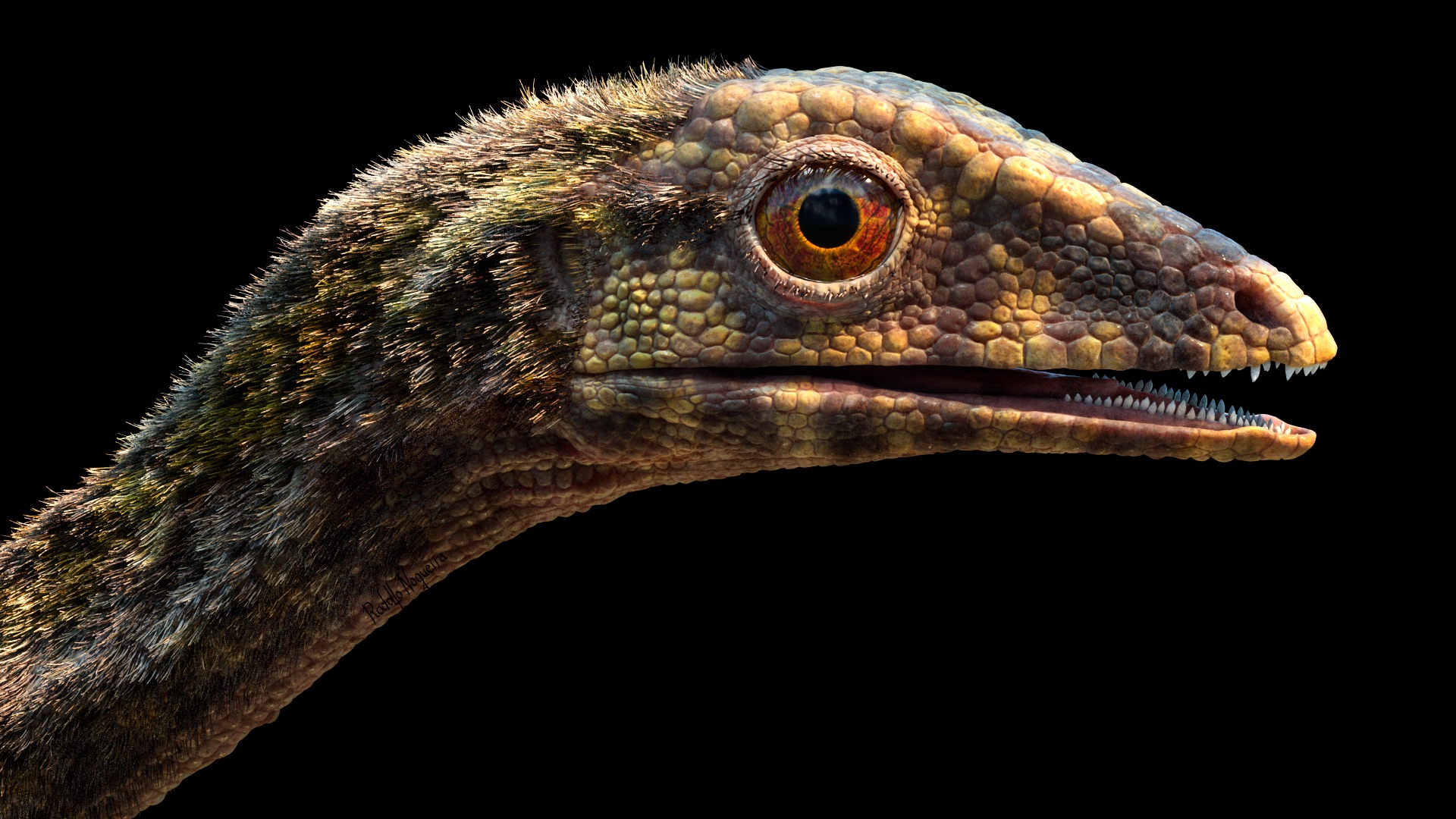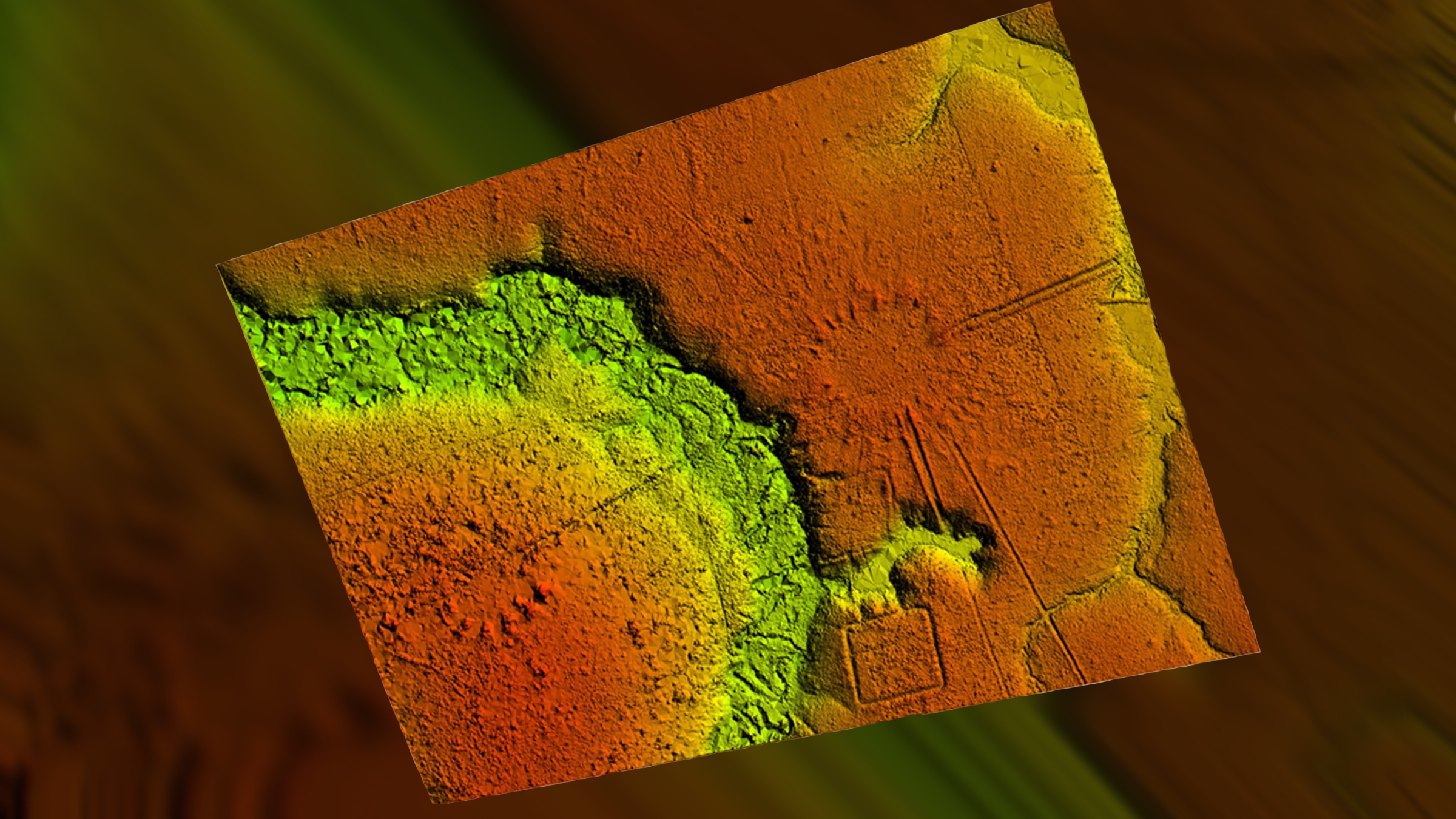Amazing images: The best science photos of the week
An exploding Starship, a nine-armed octopus, the sound of a supernova and more awesome science images.
Each week at Live Science we find the most interesting and informative articles we can. Along the way, we uncover some amazing and cool images. Here you'll discover the most incredible photos we found this week, and the remarkable stories behind them.
Gargantuan "growlers"

In July 2017, a gargantuan iceberg spanning five times the area of New York's five boroughs snapped off the coast of Antarctica and began to drift northward.
Though its edges have crumbled considerably since then, the iceberg — named A-68a — is still the largest on Earth, and it's currently barreling toward an island wildlife refuge in the South Atlantic Ocean. New aerial footage taken by the United Kingdom's Royal Air Force (RAF) reveals just what that island might be up against.
For starters, the RAF footage really drives home how massive this ice giant is. (As of early April, A-68a measured about 2,000 square miles, or 5,100 square kilometers, in area, Live Science previously reported). The berg's steep walls tower 100 feet (30 meters) above the sea, according to RAF News, and are gouged with tunnels, fissures and caves. Huge chunks of ice, or "growlers," are rapidly cracking off on all sides, leaving behind a trail of debris that could impede boat traffic in the future.
[Read more: World's largest iceberg still barreling toward penguin habitat, new footage confirms]
Clear head, nine arms, can't lose

A nine-armed octopus caught off Japan's coast nearly ended up being dinner, until the family preparing it noticed its extra limb and sent it to a museum instead, according to news sources. While unusual, this extra appendage — which wasn't fully formed, but a small offshoot on a regular arm — isn't unheard of in octopuses, said Michael Vecchione, an invertebrate zoologist at the Smithsonian's National Museum of Natural History in Washington, D.C., who was not involved with this octopus's discovery.
Octopuses are capable of regenerating their arms, but "sometimes regeneration doesn't work quite right," Vecchione told Live Science. "If an arm gets damaged, it might regenerate wrong; it could wind up with extra tissue growing out, and that extra tissue could turn into an arm."
Sign up for the Live Science daily newsletter now
Get the world’s most fascinating discoveries delivered straight to your inbox.
The nine-armed oddity was caught in a trap with three other octopuses on Nov. 13 in Shizugawa Bay, in the northeastern town of Minamisanriku, Japan, according to The Mainichi, a Japanese newspaper.
[Read more: Rare 9-armed octopus found off Japan coast]
The sound of a supernova

In space, nobody can hear you scream — or explode, or collapse, or slowly collide with a neighboring galaxy. But now, thanks to a new "data sonification" program at NASA, you can at least get a sense of what some of the most extreme phenomena in the universe might sound like when converted to sound played by Earthly instruments.
To hear what that sounds like, we turn to NASA's Chandra X-ray center — which has been imaging distant galaxies with its Chandra X-ray observatory for 20 years now. In their new initiative, Chandra researchers have taken three iconic images from their archives and translated different frequencies of light into different pitches of sound.
The first video shows the crab nebula (a supernova remnant powered by a windy neutron star, shown above). In NASA's data sonification of the nebula, X-ray light (blue and white) is represented by brass instruments; optical light (purple) is played by string instruments; and infrared light (pink) is represented by woodwinds. The sounds converge near the center of the nebula, where a rapidly swirling pulsar is blasting gas and radiation in all directions. Listen to this cosmic symphony (and two others) at the link below.
[Read more: This is what a supernova sounds like, according to NASA]
Pterosaur's missing cousin

Nearly nothing is known about the family tree of pterosaurs — iconic reptiles that flew alongside the dinosaurs. These now-extinct beasts appear in the fossil record with already developed wings and senses adapted for flying, with researchers having nary a clue about their immediate evolutionary history.
But now, the pterosaur's family tree has a new branch; an enigmatic group of small reptiles, known as lagerpetids, might be the closest-known pterosaur relatives on record, the researchers of a new study say.
Unlike pterosaurs, however, lagerpetids did not fly. "Now, we have an idea of what a flightless pterosaur relative would look like," study co-researcher Sterling Nesbitt, an associate professor of geosciences at Virginia Tech, told Live Science.
[Read more: Missing link in pterosaur origins discovered]
The changing face of ice

From vanishing sea ice to blistering air temperatures to zombie fires, climate change is reshaping the Arctic. And that transformation may be permanent, researchers said on Tuesday (Dec. 8) at the annual meeting of the American Geophysical Union (AGU).
The Arctic has warmed and melted at an alarmingly accelerating pace over the last 15 years, and the impacts are accumulating so rapidly that "there's no reason to think that in 30 years anything will be as it is today," Rick Thoman, an Alaska climate specialist with the International Arctic Research Center (IARC) at the University of Alaska Fairbanks (UAF), said at the conference, held virtually due to the COVID-19 pandemic, on Tuesday.
This year's news was not good: June snow cover across the Eurasian Arctic was at its lowest in 54 years; coastal permafrost erosion is increasing; and glaciers and ice sheets in Greenland continued a trend "of significant ice loss," according to the report.
[Read more: Dramatic transformation of the Arctic landscape may be permanent]
Starship down

SpaceX's Starship spaceflight system just took a big step on its path to Mars. The latest Starship prototype, a shiny silver vehicle known as SN8, launched on an epic high-altitude test flight on Dec. 9, taking off at 5:45 p.m. EST from SpaceX's facility near the South Texas village of Boca Chica.
The goal was to soar about 7.8 miles (12.5 kilometers) into the sky, perform some complex aerial maneuvers — including a "belly flop" like the one the final Starship will perform when coming back to Earth on operational flights — and then land safely near the launch stand. The 165-foot-tall (50 meters) SN8 appeared to notch all of these big milestones, except for the final one: The vehicle hit its landing mark but came in too fast, exploding in a dramatic fireball 6 minutes and 42 seconds after liftoff.
SN8's rapid unplanned disassembly did nothing to dampen the spirits of SpaceX founder and CEO Elon Musk, who was thrilled by the results of today's flight.
[Read more: SpaceX's Starship SN8 prototype soars on epic test launch, with explosive landing]
Amazonian universe

Billions of lasers shot from a helicopter flying over the Brazilian Amazon Rainforest have detected a vast network of long-abandoned circular and rectangular-shaped villages dating from 1300 to 1700, a new study finds.
The round villages all had remarkably similar layouts, with elongated mounds circling a central plaza, like marks on a clock. "These latter elongated mounds, when seen from above, look like the rays of the sun, which gives them the common name of 'Sóis,'" the Portuguese word for "suns," the researchers wrote in the study.
The discovery is part of a new archaeological focus on the pre-Columbian Amazon. Within the past 20 years, researchers have learned that the rainforest's southern rim was home to a great diversity of soil-sculpting cultures that engineered the landscape before the Europeans arrived. Within the past decade, scientists have uncovered the remnants of so-called "mound villages," which are shaped as circles or rectangles, and connected by road networks.
[Read more: Archaeologists find vast network of Amazon villages laid out like the cosmos]
The sky is falling

Have you ever seen 40,000 shooting stars blaze across the sky at the same time?
If you'd like to, the European Space Agency (ESA) is offering you two options: Either stare at the night sky for about half a million years as our solar system drifts steadily through the Milky Way (some patience required) — or, watch a new 60-second time-lapse simulation of the same thing, courtesy of the ESA's Gaia space observatory.
In the new simulation, 40,000 stars — all located within 325 light-years of Earth's sun — whiz through space, leaving long trails of light behind them. Each point of light represents one real object in the Milky Way, and each shining trail shows that object's projected movement through the galaxy over the next 400,000 years. Brighter, faster streaks are located closer to our solar system, while dimmer, slower ones live much farther away.
[Read more: Epic time-lapse shows what the Milky Way will look like 400,000 years from now]
Gold in the garden

A family in England was weeding their garden when they unearthed a valuable treasure — a buried hoard of gold coins dating back to the 1400s, depicting English monarchs from Edward IV to Henry VIII.
The hoard — a stash of 63 gold coins and one silver coin — contains money minted over a period of nearly 100 years, from the late 15th to the 16th centuries. Four of the coins feature Henry VIII and, curiously, one of the initials of three of his wives: Catherine of Aragon, Anne Boleyn and Jane Seymour.
Upon finding the cache, the family, in the New Forest district of Hampshire, a county in southeastern England, notified the British Museum, which runs the Portable Antiquities Scheme (PAS). This program partners with local people who find historical artifacts in the United Kingdom, so the findings can be documented and studied, the British Museum said in a statement Thursday (Dec. 10).
[Read more: Gold coin stash from time of Henry VIII found in English garden]
Enigma of the deep

Divers trying to remove old fishing nets from the Baltic sea have accidentally stumbled on a Nazi code-making machine. The Enigma machine, as it's called, looks a bit like a typewriter. In fact, the diver who found the device on the ocean floor initially thought that's what the artifact was, according to AFP. But the diving team, on assignment for the conservation group World Wide Fund for Nature (WWF), quickly realized that they had something much stranger.
During World War II, Enigma machines were used to encode German military messages, in hopes of preventing Allied powers from learning about troop movements and other plans. The devices consisted of a keyboard and a series of rotors that did the encoding. The rotors substituted different letters for the ones typed in; different Enigma machines used between three and eight rotors, which moved independently after each keystroke so that the same initial letter typed into the machine would appear as multiple different letters in the final code.
The Enigma machine found by the WWF diving crew was at the bottom of the Bay of Gelting in northeast Germany. It had three rotors, making it the type used on warships, not U-boats. That suggests that the machine may have been tossed overboard in the final days of World War II, in an attempt to keep the technology out of enemy hands, historian Jann Witt of the German Naval Association told the DPA news agency.
[Read more: Nazi 'Enigma' machine found at the bottom of the Baltic Sea]
- Earth from Above: 101 Stunning Images from Orbit
- From Big Bang to Present: Snapshots of Our Universe Through Time
- 25 Strangest Sights on Google Earth
Originally published on Live Science.

Brandon is the space/physics editor at Live Science. His writing has appeared in The Washington Post, Reader's Digest, CBS.com, the Richard Dawkins Foundation website and other outlets. He holds a bachelor's degree in creative writing from the University of Arizona, with minors in journalism and media arts. He enjoys writing most about space, geoscience and the mysteries of the universe.
Why is yawning contagious?
Scientific consensus shows race is a human invention, not biological reality









